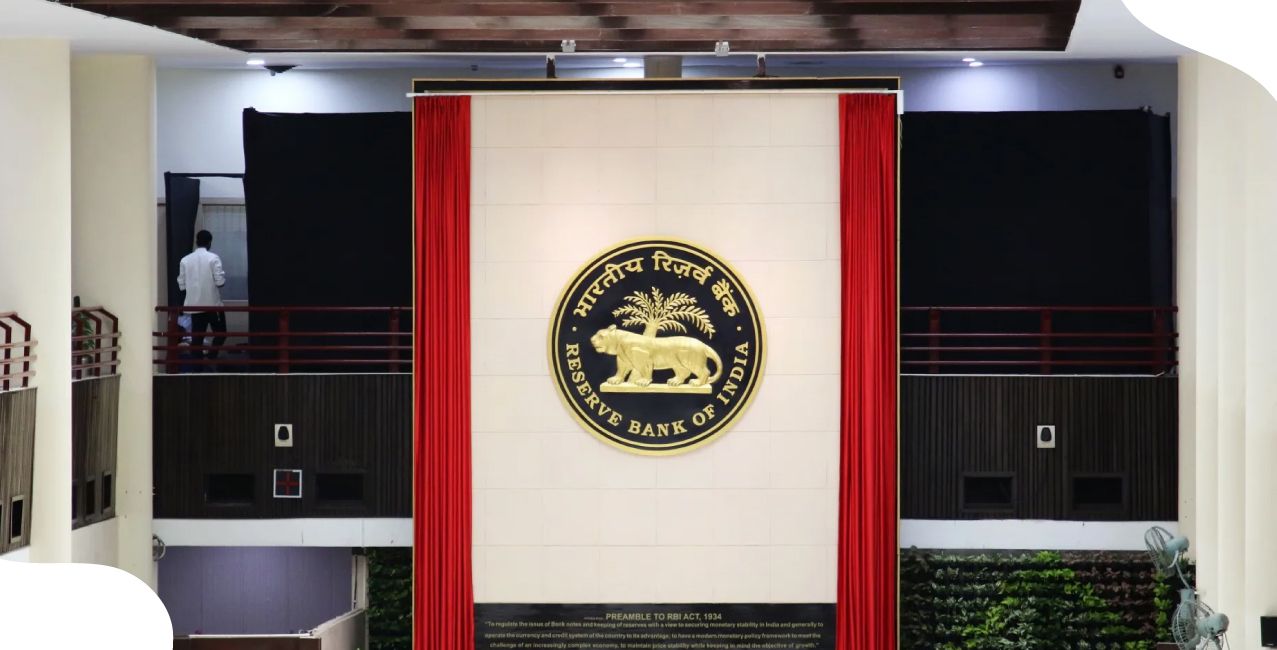
Author
LoansJagat Team
Read Time
4 Min
21 Aug 2025
Major Move: RBI to Closely Track 10-Year Tenure of Bank Directors, Says MoS
In 2020, the Reserve Bank of India (RBI) floated a discussion paper on bank governance that squarely addressed the risk of managerial “entrenchment”. It proposed that a bank promoter (or major shareholder) serving as MD & CEO/Whole-time Director (WTD) should not occupy the corner office indefinitely.
10 years was unanimously decided as a sensible outer limit for a promoter-CEO/WTD before the individual transitions to professional (non-executive) management.
The thrust was clear: preserve continuity, but prevent dominance and conflicts of interest.
Since then, two parallel strands of policy have taken final shape. First, RBI’s final governance instructions (April 2021) set binding age and tenure norms for MDs/CEOs and WTDs in private-sector banks. Second, Parliament amended the Banking Regulation Act (BR Act) to reset board tenure rules for co-operative banks, with effect from 1 August 2025, and the
The Finance Ministry has told the Rajya Sabha that the RBI is overseeing compliance through its established supervisory machinery.
How is RBI monitoring the new 10-year rule for co-operative bank directors?
The Banking Laws (Amendment) Act, 2025 revises Section 10A(2A)(i) of the BR Act to permit directors of co-operative banks (other than the Chairperson and WTDs) to serve continuously for up to 10 years, replacing the earlier eight-year ceiling. The change took effect on 1 August 2025.
The Ministry has communicated to the Rajya Sabha that RBI is coordinating with state authorities and supervising adherence through its off-site surveillance and on-site inspections. RBI has long used off-site returns (OSMOS/CRILC) and risk-based on-site examinations (SPARC) for close, continuous supervision—tools it is leveraging here as well.
How many CEOs and Whole-time Directors are serving beyond 10 years today?
The 10-year metric appears most frequently in the co-operative banking context. In a recent parliamentary exchange referenced by sector publications, NABARD indicated that Ahmedabad District Co-operative Bank (ADC Bank) has a significant cohort of long-serving directors. about 18 members, including one in a Chairperson/WTD position whose tenure crosses 10 years.
This underscores why the new cap and monitoring regime matter: to ensure timely board refresh while protecting institutional memory.
(Note: Commercial banks follow RBI’s 2021 tenure framework for MD/CEOs/WTDs; see below.)
Why move from 8 to 10 years for directors in co-operative banks?
Two policy logics, both rooted in Indian law and practice, drove the shift:
- Constitutional alignment and uniformity. The 97th Constitutional Amendment strengthened democratic, time-bound governance of co-operatives (fixed terms, timely elections, accountability). Calibrating the BR Act limit to 10 years improves alignment, practically enabling two full five-year board cycles, while keeping periodic renewal intact.
- Continuity for stability and oversight. Co-operative banks have heterogeneous capabilities and operate under dual oversight (central bank + state systems). Allowing two full terms helps retain experienced directors long enough to complete remediation or transformation programmes, while the 10-year ceiling still prevents indefinite stasis. The PIB note on the 2025 amendments situates this within a broader clean-up and modernisation of co-operative banking governance.
What is the maximum age for Bank MDs/CEOs and Whole-time Directors?
For private-sector banks (including SFBs and wholly-owned subsidiaries of foreign banks), RBI’s 2021 instructions fix a hard upper age limit of 70 years for MD & CEO/WTD, and 75 years for non-executive directors (including the Chair of the board). Within those ceilings, each bank’s board may impose lower retirement ages.
What happens after a CEO/WTD finishes 10 years but hasn’t reached the age cap?
Two clarifications help:
- The 2020 “10-year” idea applied specifically to promoter-CEOs/WTDs in the discussion paper. RBI’s final 2021 framework instead prescribes a maximum of 15 years for MD & CEO/WTD in total (for **promoters/major shareholders, ordinarily capped at 12 years, with RBI discretion to extend up to 15 in exceptional cases).
- After hitting the applicable cap, the individual must step down even if under the age limit. A three-year cooling-off bar applies, during which the person cannot be associated with the bank or its group in any capacity. After cool-off, they can be considered for roles again, subject to fit-and-proper and regulatory approvals.
- For co-operative banks, the 10-year ceiling discussed in this article concerns non-executive directors (excluding Chair/WTDs) under the BR Act amendment. Once they complete 10 continuous years, a board refresh is expected before any subsequent stint, consistent with fit-and-proper and election rules. RBI monitors compliance through its supervisory processes.
India’s rules at a glance (and how others compare)
Before we compare, note the different philosophies:
India uses hard regulatory caps for bank MDs/CEOs. Secondly, many jurisdictions rely on board judgment and corporate governance codes (with tenure guidance mainly for independent directors, not executives).
Below is a compact comparison to situate India’s stance internationally.
Why this matters: The table shows India’s regime is more prescriptive for executive tenures than most peers, with clear guardrails on time in office, age, and cooling-off. Others rely more on market discipline and board-level codes.
What are the likely upsides and downsides of moving to a 10-year limit (from 8) for co-operative bank directors?
A brief setup before the list: co-operative banks navigate local member interests, state-level frameworks and RBI prudential norms. A two-year extension does not change the world overnight, but it can alter board continuity, succession timing and regulatory certainty.
Potential positives and negatives (curated)
- Positives
- Continuity through two full cycles: Ten years dovetails with two five-year election cycles, aiding execution of multi-year remediation and technology projects.
- Institutional memory: Retains experienced directors long enough to strengthen control functions and risk culture.
- Smoother succession planning: Predictable end-dates allow systematic grooming of committee chairs and WTDs.
- Continuity through two full cycles: Ten years dovetails with two five-year election cycles, aiding execution of multi-year remediation and technology projects.
- Negatives / Watch-outs
- Risk of entrenchment: Longer stints can reduce challenge in the boardroom if renewal mechanisms are weak.
- Political capture concerns: In some co-ops, local politics may influence re-elections; longer horizons need stronger fit-and-proper vetting.
Complacency risk: Without rigorous on-site/off-site supervision, extended tenure could slow necessary change.
- Risk of entrenchment: Longer stints can reduce challenge in the boardroom if renewal mechanisms are weak.
After the list, the important point is balance: the 10-year limit is paired with ongoing RBI supervision (off-site returns and on-site inspections) to mitigate the entrenchment and capture risks while harnessing the benefits of continuity.
So, why “10 years” for promoter-CEOs in RBI’s 2020 paper and what is the rule today?
RBI’s 2020 discussion paper argued that ten years is adequate for a promoter-CEO/WTD to design and institutionalise strategy and systems, after which professional management should take charge to prevent dominance and align with global good practice on board refresh.
Today’s binding rule, however, is the 2021 circular: up to 15 years for MD/CEO/WTD in private banks; promoters/major shareholders ordinarily up to 12 years (extendable to 15 in exceptional cases), with a three-year cooling-off thereafter.
Conclusion
The governance direction is consistent: refresh without rupture.
For co-operative banks, the BR Act’s 10-year director limit (effective 1 August 2025) aligns with constitutional and practical realities, and RBI is actively supervising compliance using its off-site/on-site toolkit. For commercial banks, RBI’s 2021 framework hard-wires age caps, tenure caps and cooling-off to align incentives and curb entrenchment.
Evidence from parliamentary replies (e.g., the long-serving cohort at ADC Bank) demonstrates why these rules matter in practice. The net effect, if accompanied by vigilant supervision and strong board processes, should be greater stability without sacrificing accountability.
About the Author

LoansJagat Team
‘Simplify Finance for Everyone.’ This is the common goal of our team, as we try to explain any topic with relatable examples. From personal to business finance, managing EMIs to becoming debt-free, we do extensive research on each and every parameter, so you don’t have to. Scroll up and have a look at what 15+ years of experience in the BFSI sector looks like.

Quick Apply Loan
Subscribe Now
Related Blog Post

LoansJagat Team • 10 Jun 2025

LoansJagat Team • 06 Jun 2025

LoansJagat Team • 22 Sep 2025